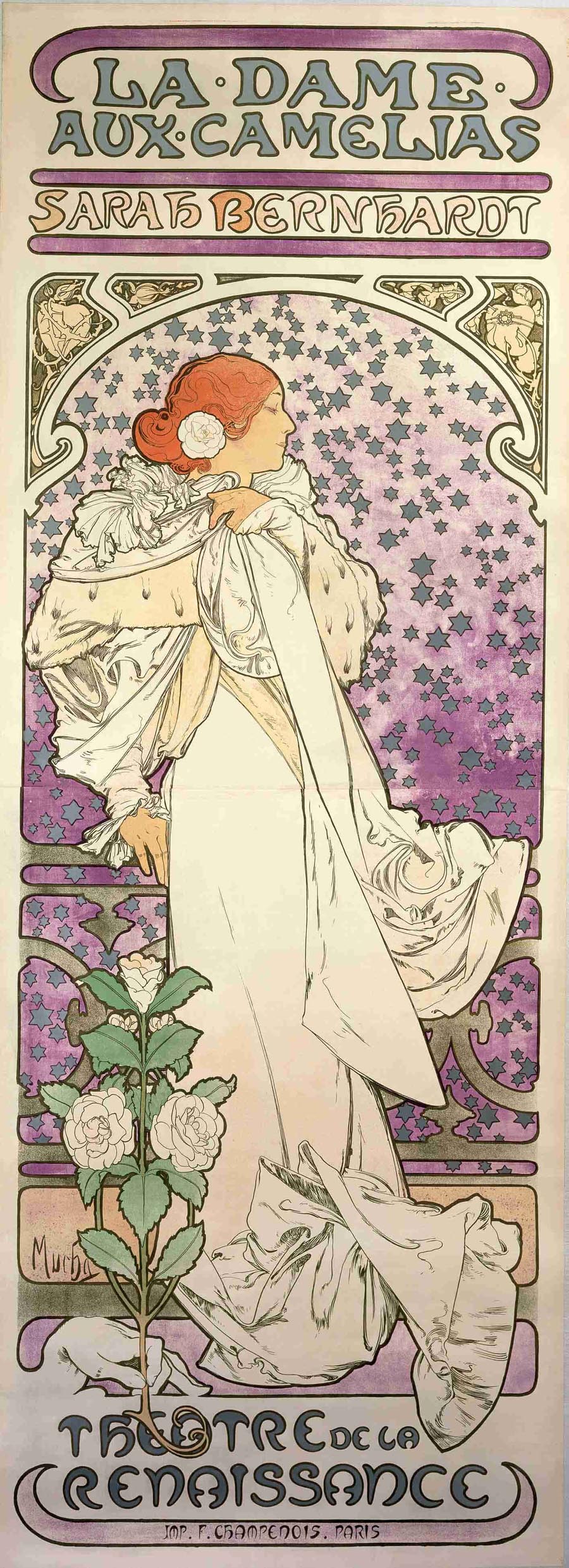 |
|
A poster for La Dame aux Camelias from 1896(color lithograph). [Photo provided to China Daily] |
As part of the contract, Mucha produced six more posters for her productions, including La Dame aux Camelias and Lorenzaccio, which are also being displayed at the exhibition.
"My great grandfather created something completely new at the time-the birth of a new movement in art history," he says.
Sato explains that Mucha had applied to all his posters the same design principle he developed for Gismonda-the use of a long narrow format with a single, full-standing seductive silhouette of the actress that was positioned in a raised shallow alcove.
"The format was beneficial to marketing and easy for people to understand the style of Mucha. It gained people's recognition of his work and showed how Bernhardt was an icon," Sato says.
Mucha's first set of decorative panels, The Seasons-which are considered to be the most representational works of art nouveau-is another highlight at the exhibition.
So popular was the style used in these panels that Alphonse Mucha was once nicknamed as the "Prince of Poster Art" by the media. The New York Daily had even dedicated a page to welcome his arrival in the United States in 1904.
The exhibition organizers also recommend that visitors check out the section that showcases Mucha's works on spirituality such as Nude on a Rock and Vision.